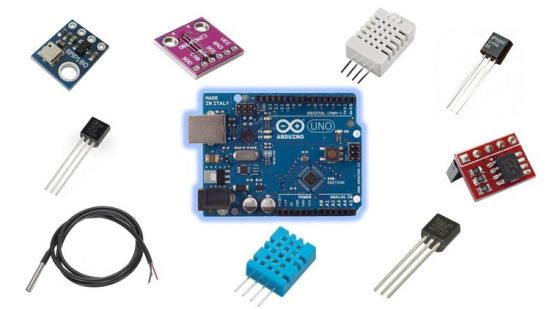
MP4 | Video: h264, 1280×720 | Audio: AAC, 44.1 KHz, 2 Ch
Genre: eLearning | Language: English | Duration: 18 lectures (1 hour, 54 mins) | Size: 986 MB
Read any Noisy Sensor Data and use different types of filters to reduce the noise and convert RAW data to useable data
What you’ll learn
Read Analog Sensors Data using Arduino
Filter noise using Low Pass Filter
Analyze, Filter and Convert Sensor Readings
Filter noise using High Pass Filter
Filter noise using Band Pass Filter
Filter noise using Stop Pass Filter
Filter noise using Moving Average Filter
Filter noise using Normal Average Filter
Learn the difference between different filters and which to use and when
Learn how to code each filter in Arduino C Coding
Use sensor data to achieve project goals
Requirements
An Internet Connection
Basic knowledge in Programming
Description
Read any Noisy Sensor Data and use different types of filters to reduce the noise and convert RAW data to useable data
Sensors and microcontrollers allow us to turn real-life phenomena into simple numerical signals that we can learn from. However, the raw output from the sensor may not be sufficient to extract desired information from. Real hardware is subject to interference and noise from the environment.
Filtering is a simple technique that you can use to smooth out the signal, removing noise and making it easier to learn from the sensor output. This course introduces the concept of filters in different types and how to incorporate them into your design.
Measurements from the real world often contain noise. Loosely speaking, noise is just the part of the signal you didn’t want. Maybe it comes from electrical noise: the random variations you see when calling analogRead on a sensor that should be stable. Noise also arises from real effects on the sensor. Vibration from the engine adds noise .. etc
Filtering is a method to remove some of the unwanted signals to leave a smoother result.
Why you should take this course?
Since many sensors produce noisy data, this course will show you how to filter and clean the data so that it can be used for more accurate measurements
You will learn practical ways on how to reduce sensor noise and can perform some of these filters using MATLAB
Nowhere else will you find the information in this course because it is a comprehensive guide
The videos not only teach you about filters but also give exercises that can be done to gain hands on experience
This course will give you the confidence to know that you can perform different types of filters which are already specified by MATLAB
A wide variety of lessons are available such as signal preprocessing, filtering algorithms, and error models.
You Will Learn:
Why we need to clean noise data
What are Filters
How to implement Filters using Microcontrollers like Arduino
Moving Average Filter
Averaging filter
Running average filter
Exponential filter
Turning Filtering equations into actual code
Compare results before and after filtering
You will learn as you practice with real-world examples in this course
Who this course is for:
Anyone Interested in Filtering Noise from different Sensors using Microcontrollers like Arduino
Anyone Interested in Learning how to code filters using Arduino C Programming
Anyone Interested in Learning New Things about Arduino
Anyone with slight interest in making great things
Arduino Geeks
Electronics Geeks
Hardware developers
Password/解压密码www.tbtos.com